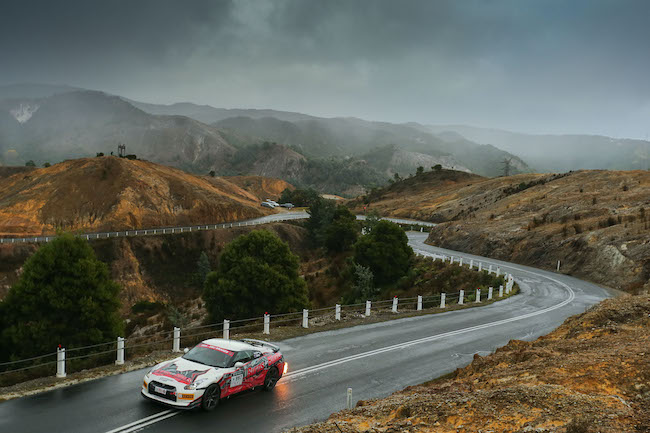WHAT MAKES TARGA ROADS MAGICAL

Some of Australia’s most successful tarmac rally drivers have analysed the reasons why TARGA Tasmania’s roads are the envy of world motorsport.
High on their list is the sheer variety of roads that criss-cross the island state.
The network of public roads embrace twisting, undulating routes with straighter expanses of bitumen that cut through some of the most unique and spectacular terrain in Australia.
Since the first TARGA Tasmania in 1992, the event has evolved into the most pre-eminent tarmac rally competition in the world that will celebrate its 30th anniversary next year.
Ahead of the 29th edition of TT blasting off from April 19 to 24, a selection of drivers have outlined the reasons why Tasmania offers the best experience of a lifestyle motoring odyssey.
Jim Richards, who with co-driver Barry Oliver have claimed a record eight outright TARGA Tasmania wins, says the highlight of driving on Tassie roads is the tantalising variety of roads that access exhilarating terrain.
“The roads in Tassie are a real combination of up and down and around and nice flowing corners with some nice gorge style corners,” said Richards, who retired from the competitive element of TARGA Tasmania after his 26th time at the event in 2018.
“It has a bit of everything. Its got a bit of wet and dry but the main thing is you get a chance to relax in between the stages.
“It’s also great to have a bit of camaraderie with your co-driver and other competitors.
“Barry (Oliver) and I just really enjoy it. Now that we are just doing the Tour (non-competitive) side of things its not quite as serious and its just a nice relaxing drive in the country.
“You are just going a little bit faster than you normally can. But you get a chance to look around and take in the surroundings a lot more.
“The scenery is different in Tassie than anywhere else in the country so it really is quite unique.”
Accomplished circuit racer and the 2019 TARGA Tasmania winner, Paul Stokell is well qualified to judge what makes the DNA of the event so special.
“I think its probably the best event I’ve done anywhere in the world simply because of the diverse nature of the roads. You are out there on the road where you are allowed to drive unrestricted so its a pretty magical experience,” said Stokell, who was born in Tasmania.
“It’s one of the highlights of my driving career and the beauty about Tasmania is you are never going over the same roads twice.
“I guess I grew up on a lot of the west coast roads and they just flow so well. I don’t know of any better roads in the world.
“The highways keep going through the mountain passes, the surfaces of the roads are pretty good and I don’t think you could match it anywhere in the world. It’s pretty unique.
“You look at events around the world, everything has been sterilised so much over the years particularly in circuit racing, so TARGA and the Isle of Man races I consider as the last bastion of freedom that drivers and riders have a chance to really test their mettle against the elements.”
Melbourne Porsche driver Matt Close maintains that the pure variety of terrain and roads are the reason why TARGA Tasmania is regarded as the leading tarmac rally in the world.
“It’s the variety, so for example, like the difference between the Phillip Island and Baskerville race circuits and you’ve got everything in between,” Close explained.
“You’ve got the fast, flowing stuff and the tight, technical stuff.
“But what I really like about it is that it builds. The super quick stuff down the west coast and just when you feel like you are getting a little bit weary from three days of racing, it amps up again so it sort of crescendos to the point where the stakes get higher and the weather gets a bit worse.
“Picking two stages for comparison, you couldn’t get any different than The Sideling and Mt Arrowsmith. So there is a bit in it for everyone.”
The 2021 edition of TARGA Tasmania sets off from Launceston on April 19 with the first of 37 stages amounting to almost 620km of competitive distance and 2437m of total distance over six days.
Media contact details
Ian Chesterman – 0417 530902
Gordon Lomas – 0419 733 995